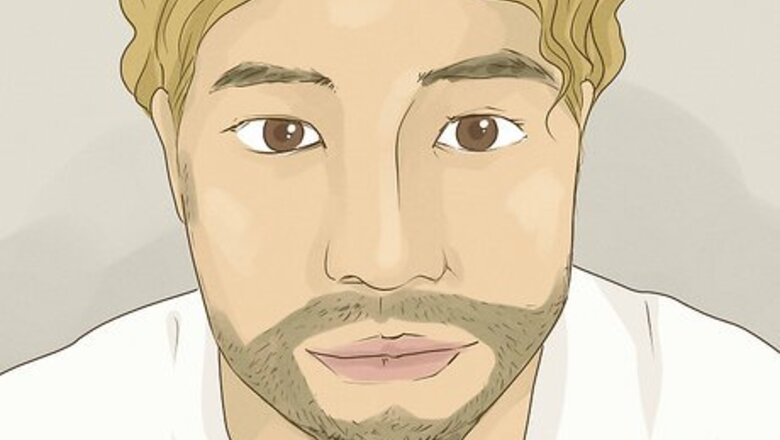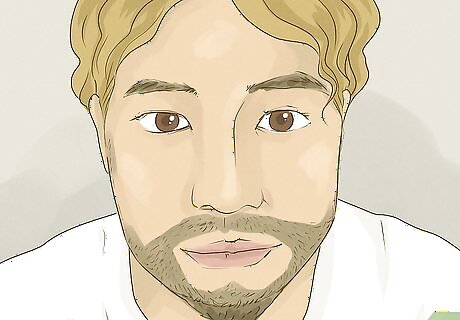
views
How to Take a Great Headshot

Determine the type of headshot you need. Victoria Sprung, a professional photographer, notes that headshot styles vary depending on what you use it for. Ask yourself what you’re mainly using your headshot for to help figure out the tone you want to aim for. Business or corporate headshots show off your professionalism and help people have a good first impression of you or your brand. You’ll typically use these for websites, business cards, and a LinkedIn profile. Acting headshots showcase your personality and focus more on your face to help casting directors see if you’re the right fit for a role. These headshots are best for bringing along to auditions or posting on a portfolio site. Modeling headshots tend to be a little more artistic and creative with their composition and poses. These headshots are best if you’re trying to book more modeling gigs. If you’re a professional photographer, ask your clients what they plan on using the headshot for so you can help plan what you need for the rest of your shoot.
Shoot in front of a clean, neutral background. Professional photographer Boris Polissky says, “Make sure there’s a clean background without extra people, objects, colors, and…anything that would distract you from your subject.” When you plan your backgrounds, stick to plain-colored walls or backdrops, distant trees outside, or a clean home office for the best look. If you’re only able to shoot somewhere that has a busy background, then you can always blur it later on to make it less distracting. If you’re taking headshots somewhere other than your home or photo studio, be sure to ask for permission or get the necessary permits if they’re required.
Wear a professional outfit that has solid, muted colors. When you’re planning an outfit, choose clothes that you would want to wear in front of your ideal client or boss. Make sure your clothes fit you well and try layering darker colors over lighter colors for a cleaner look. The best colors for headshots are muted tones like burgundy, navy, plum, or charcoal because they aren’t distracting. The clothes you wear may also vary depending on your profession. If you’re a lawyer, wearing a suit in your headshot shows your level of professionalism. If you’re an artist or in a less formal industry, a plain button-up or blouse works great. Avoid distracting patterns like polka dots, pinstripes, or small checkers because they can add distracting wavy lines to your headshot when they’re viewed online. Choose clothes that have modest necklines because showing too much skin can look unprofessional in a headshot.
Stick to simple accessories, makeup, and hairstyles. When you’re choosing accessories, wear subtle styles that aren’t distracting, and avoid sparkly jewelry. Try simple bracelets, necklaces, scarves, or small earrings. If you wear makeup, use matte foundation and concealer to hide any blemishes. Then, apply a slightly glossy lipstick and neutral-colored eyeshadow for a natural look. When you’re styling your hair, wear it how you normally would so it looks natural. Avoid putting your hair in a bun or ponytail though because it may look awkward in the final photo. If you wear glasses, make sure they don’t have a reflective coating that causes glare in your photos. Clean the lenses thoroughly before your picture so they don’t look smudged. If there’s a unique accessory or look that strongly represents you or your brand, then try it out for your headshots to showcase your personality. Just bring a backup look in case it ends up looking too distracting.
Choose a spot with bright, even lighting. Polissky recommends waiting for a cloudy day or standing in the shade if you’re shooting outside. If you’re shooting indoors, stand in front of a window but out of direct sunlight. Polissky adds that facing toward your light source gives your headshot a clean look without unneeded shadows. Avoid using overhead lights because they can cast shadows on your face that look unnatural. Sprung recommends “get[ting] yourself really comfortable with using your own lighting and not just relying on ambient light or daylight because…sometimes you're not going to have enough ambient light.” If you’re using flash, professional photographer Stephen Cardone recommends moving the light source away from the middle and setting it slightly higher than your eye line so it falls evenly on your face.
Use your phone or a professional DSLR camera. If you’re shooting your own headshots, your phone camera works great if you’re on a budget and don’t have other equipment. If you have a point-and-shoot camera or a DSLR, use it instead because you’ll often have more control over your picture settings. You can start shooting right away with an Android phone because they save high-quality JPEGs. However, iPhones save pictures as HEIFs or HEVCs that are less compatible with other devices. Change the picture settings by going into Settings > Camera > Formats and then selecting “Most Compatible.” If you have an iPhone Pro 12 or later, then use the ProRAW format instead. If you’re shooting with a DSLR camera, use an 85mm lens for the best pictures. If you want more versatility for shooting other subjects as well, then go with a 70-200mm lens so you have more range.
Adjust the camera settings to get the clearest image. Make sure your camera is shooting in the RAW file format if you’re able because that saves the most color information. The actual exposure and settings you use may vary depending on your camera and where you’re shooting, but the following settings are good starting points. Remember that you can always adjust your settings again if you need to. Aperture: Polissky recommends setting your aperture anywhere from 1.4 to 2.8 for the best image. He mentions that 1.4 is best if you’re facing the camera directly. Otherwise, some parts of your face may look more blurry than others. ISO: Start with an ISO setting around 100 or 125, and turn it up if your picture looks too dark. The ISO controls how much light comes into your camera, and setting it much higher could make your headshot look blown out. Shutter speed: Try starting at a fast shutter speed like 1/250. If the picture looks a little dark, try cranking the shutter speed down as low as you can while still getting a sharp image. Just keep in mind that lower shutter speeds can make your image look blurry if you move around during the picture. While built-in camera apps on your phone don’t normally show these settings, some third-party apps give you more camera control. Try using apps like ProCamera, Halide, Open Camera, or Manual Camera.
Use a tripod or ask a friend to take the picture. Rather than taking a selfie to use as your headshot, secure your phone or camera to a tripod. Otherwise, hand your camera off to a friend or family member so you can pose more naturally. If you don’t have a tripod or anyone to help out, then it’s still possible to take your own photo. Just make sure the arm holding your phone isn’t visible in the final shot.
Position the camera slightly lower than eye level. Stand up straight in front of the camera. Set the tripod level or ask your friend to hold the camera just below your eyes and slightly pointing up. Keeping your camera here can make you look more powerful and confident in your headshot.
Frame the photos from the chest or waist up. As you’re setting up your shot, leave room between your body and the top and side edges of the frame so both shoulders are visible. Cut the image off on the bottom in the middle of your chest for a tighter crop, or at your waist if you want a taller image. Having a tighter crop on your headshot makes your face the main focus of your picture rather than anything in the background. You may need taller images or full-body shots if your headshot needs to fit a specific format, like a portrait on a business card or an "About" page on a website.
Focus the camera on your eyes. Cardone says, “The first thing that people look at when they look at a picture…[is] the person's eyes.” When you’re standing in frame for your picture, ensure that both of your eyes look clear and crisp. Make any adjustments to your focus so you don’t see any blurriness around your eyes. If you’re able to, use manual focus so you have the most control in setting up your headshot. If you’re just starting off with photography, Sprung says autofocus can still be a helpful tool. Learn how the autofocus settings work for your camera so you can set up and take your pictures more quickly.
Experiment with different poses. Stand in front of the camera and slightly turn your head and shoulders to face it. Stick your head out and lower your chin slightly to help give you a more pronounced jawline and look your best. Don’t be afraid to try different positions and poses throughout the shoot to see what you like best. Cardone recommends using the “rule of thirds” for your composition. To do it, imagine lines “dividing the frame into three equal parts, and [positioning yourself] on one of those lines” so you’re either to the left or right of the frame’s center. He says, the rule of thirds “creates this really interesting look that can bring the eye into the picture.”
Maintain a relaxed, confident expression. Right before you’re about to take your picture, close your eyes and take a deep breath to help you feel relaxed. When you’re ready to take the picture, look directly into the camera and give a warm, natural smile for the best look. Should you smile in a headshot? Yes! Smiling makes your headshot more warm and inviting as long as your expression looks genuine. Try not to force a big grin or hold your smile for a long time because it can make you look uncomfortable. It’s okay to smile with your mouth closed or open. Just do whatever feels the most comfortable and natural. Start with a few silly pictures to ease the tension and feel relaxed before you start taking your headshots.
Review your photos as you go. As you’re taking headshots, look back through your pictures to see what you like and what you don’t like. If there’s anything out of focus or the camera settings look off, try making slight adjustments and taking more pictures. It’s normal to take 20 or more pictures when you’re trying to get a good headshot. It also helps to have some variety so you have some different options to choose from.
Adjust the brightness and color of the final images. Bring your headshots into editing software like Adobe Lightroom or Photoshop. Change the crop of the photo if there’s extra space in the background. Then, play with the exposure, highlight, and shadow settings to help brighten your image and correct any colors that look off. When you’re finished, save your image so it’s ready to use! Editing your photo can take some trial and error, so don’t be afraid to save multiple versions to see what you’re the most happy with. If you plan on printing acting headshots out, resize the images to 8 by 10 inches (20 cm × 25 cm).
Marketing Headshots as a Photographer

Price headshots competitively to other photographers in your area. How much you charge for your headshots depends on the cost of your equipment, business expenses, and how much you need to make a profit. Research what other photographers are charging in your area for headshots, and set similar prices. A good starting point to charge for your headshots is about $50 USD for a 1-hour session and $35 USD for each edited final image. As you gain more experience, start increasing your prices. You can sell headshot packages at a discounted rate. For example, for a 1-hour session and 3 edited images, you may charge $125 USD.
Market your headshot services on social media. Once you start offering headshots, mention it to your network on Facebook, Instagram, or any other places where you’ve built a following. Share pictures from your shoots to show off your skills and let others know they can book with you. Mix up the types of posts you share, like behind-the-scenes of your shoots and client stories as well. You may also send your old clients a newsletter to let them know you’re now offering headshots.
Add headshots to your other photo shoots as an upsell. If you already have clients booked for a photo shoot, let them know that you’re also offering headshots. You could give them a special deal for adding a couple of headshots into their shoot, or invite them to a mini session at a discounted rate. You may say, “Looking forward to our family photo session coming up! Do you or your partner also need an updated headshot? If you bring another outfit, I’d be happy to take 2–3 headshots for an extra $100.”
Compliment your clients during the shoot to help them relax. Getting headshots taken and being one-on-one with a photographer can be a little stressful, so talk up your clients throughout the session. Let them know they’re doing a great job and tell them that they look amazing. Plus, compliments will draw out their natural smile and make their expressions look genuine. Don’t be afraid to guide your clients through poses to help them look better. You could say something like, “That last shot looked great! If you try tilting your head down a little more for me, I think it can look even better.”
Connect your camera to a laptop to let clients see their pictures right away. Plugging into your computer and using software like Adobe Lightroom or Canon EOS Utility lets you view pictures as you take them. When you take a picture, show your client and ask them if they’re happy or want to make any adjustments. Viewing your pictures on a laptop screen right away can also make it easier to see if there are any changes you need to make to the lighting or camera settings.

Deliver finished pictures to your client with a file-sharing service. After you put the last edits onto the pictures, it’s easiest to share the files online. Upload the best pictures, or include them all so your client can choose which ones they like best. Many sites allow you to even set prices and make sales directly. Pixieset gives you a lot of control to upload galleries of photos, set prices, and let clients download pictures, but they charge a commission fee for their free plan. Shootproof lets you upload all the pictures to an online gallery so your clients can view them, select their favorites, and order prints. Google Drive or Dropbox are easy to use and convenient for other people to access, though your storage space may fill up quickly if you have a lot of clients. You may also upload the pictures to a CD or USB drive to give to your clients so they have physical backups.




















Comments
0 comment